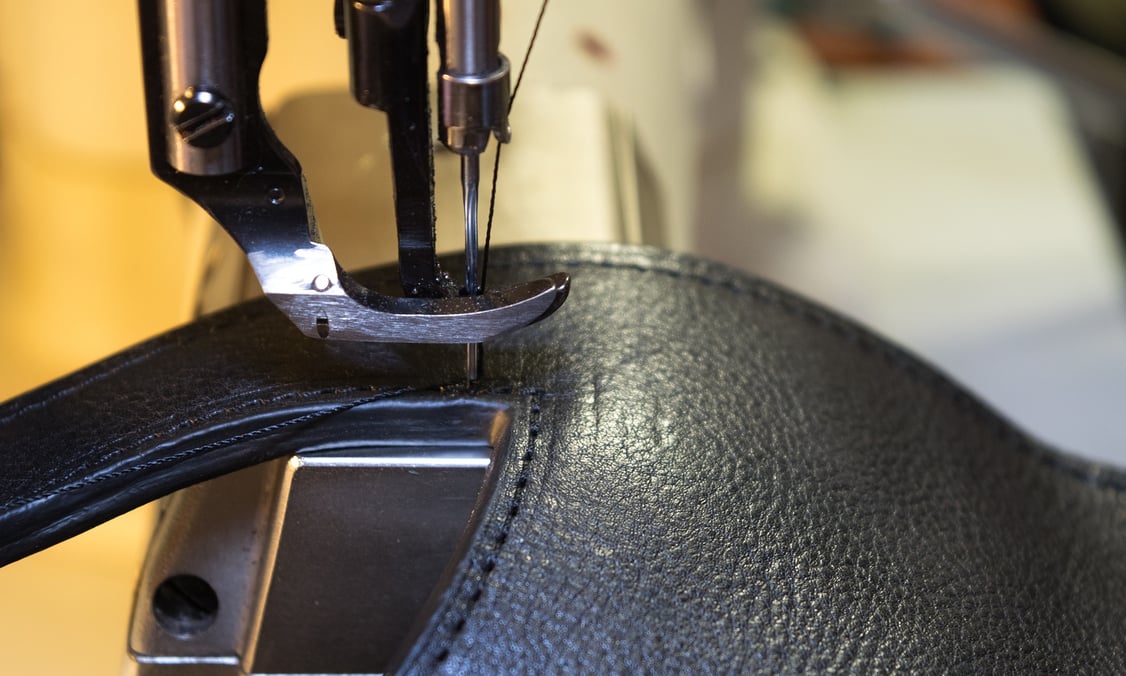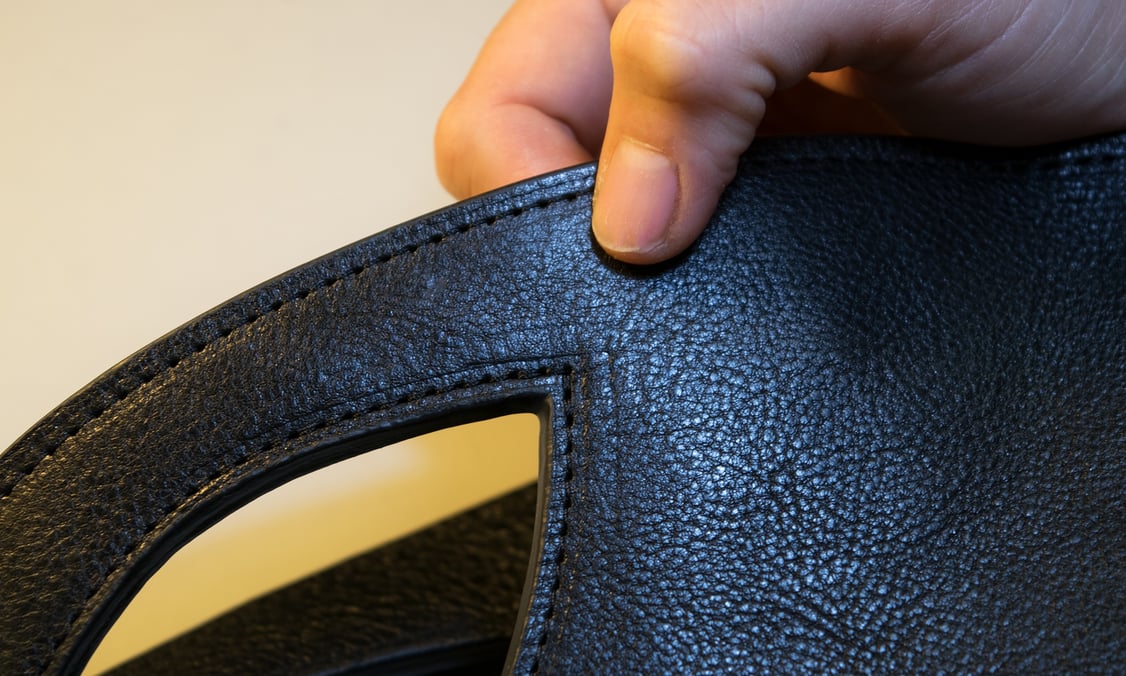
Photo by Liz Silvia
In the studio this week we’re working on another batch of the Rho handbag. Today we’re looking at how this bag is stitched by machine and hand.

Photo by Liz Silvia
Being fully leather-lined makes this bag a bit harder to stitch than our unlined pieces. Not only is there an increase in the thickness, there is also a higher chance of the leather slipping off the machine due to both sides being smooth. The difficulty is amped up considerably when stitching the bridle version of this bag, which has an even glossier surface. Lucky for us, our artisan stitchers are experts at being meticulous and have the know-how to guide the leather through the machine with great care.
When asked what makes this particular bag unique in its stitching, our artisans explain that the rounded curves and no use of a guide means that all the stitching must be done using memory and skill alone. This is particularly challenging when stitching the eye of the handle. In this instance, they’ll sometimes use jigs or paper templates, but our stitchers are so experienced that this often isn’t necessary. They rely instead on only their trained eye!

Photo by Liz Silvia
One trademark of Lotuff’s stitching is something we call a “soft corner”: hugging the angle—on a strap, for instance—rather than coming to a sharp point-and-turn. It’s something that demands an understanding of the leather and substantial focus. And as always, points of strain are reinforced by executing small feats of stitchery: doubling back into already stitched holes. This Lotuff custom of going above and beyond ensures the durability of our bags under wear-and-tear while also showcasing a committed design element that all of our pieces share.

Photo by Liz Silvia
Following each stage of stitching, the bags move over to our turn-and-burn artisans. The Rho, specifically, needs a couple of perfectly executed hand-stitches sewn into the hard-to-reach curved areas that the machine cannot get to. Our hand-stitchers also add beautiful edge wraps to the Rho, as well as tying numerous square knots that get cut, burned, and tucked back into the thread hole to be rendered invisible. This stage is not a technical necessity to making a bag, but doing so makes a huge difference in a piece’s longevity and polished aesthetic.

Leave a Comment